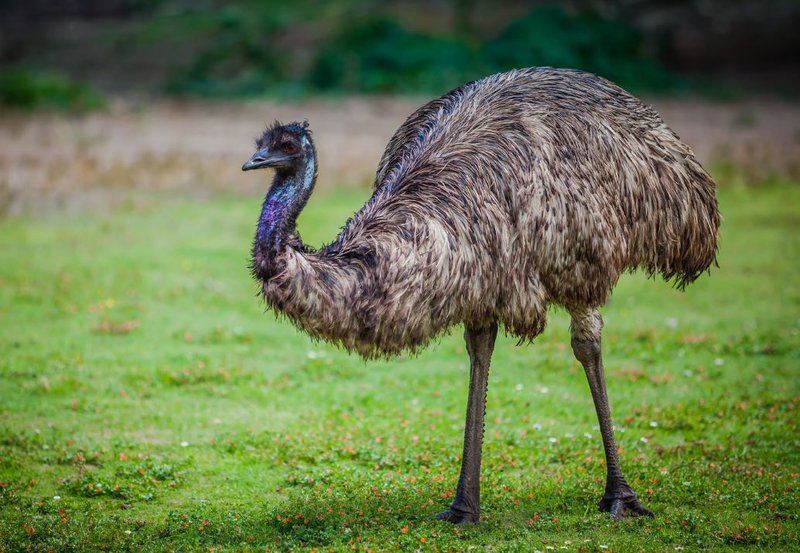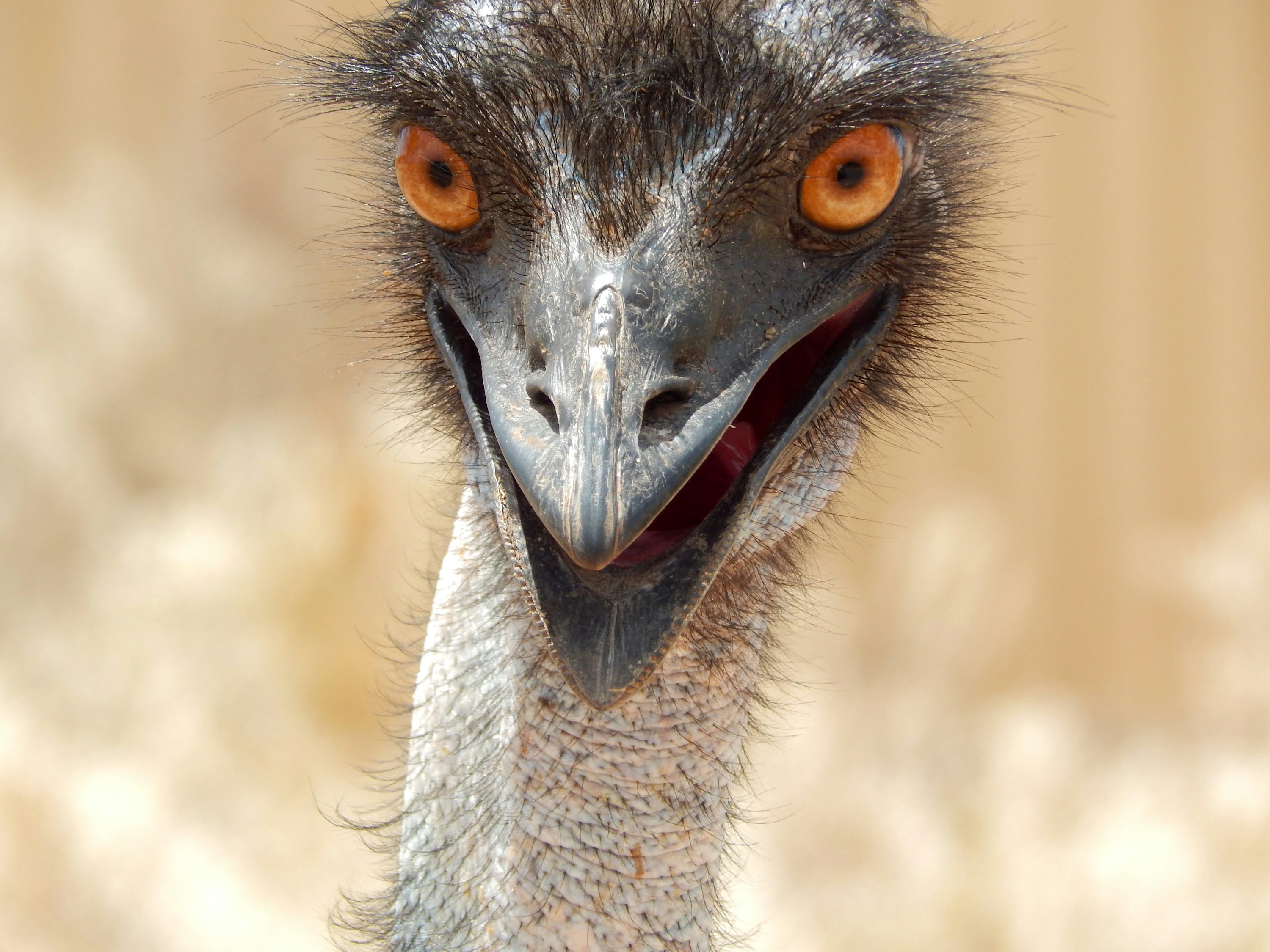Total Weight
Height
Diet
Lifespan
Total Weight
Height
Diet
Lifespan
Emus are large flightless birds native to Australia.
They are known for their tall stature, powerful legs, and ability to run at high speeds. They have unique feather
patterns and a distinctive neck and head. Emus are herbivores, feeding on plants, fruits, and seeds. They play an
important ecological role in their habitats.
Visitors, especially children, are fascinated by their curious nature and distinctive blue necks. The zoo
authorities ensure proper care, providing them with clean water, shade, and a suitable environment for their
well-being. Emus play an important role in spreading seeds through their droppings, helping maintain
ecological balance.


The emu enclosure at Patna Zoo provides a spacious and natural habitat for these unique Australian
birds. Lush vegetation, open spaces, and appropriate shelter create an environment where emus can roam freely,
exhibit natural behaviors, and captivate visitors with their grace and charm.
The enclosure is carefully designed to mimic their native surroundings, ensuring their well-being and comfort.
Visitors can observe these flightless birds as they interact, forage for food, and communicate through their
distinctive sounds.
Informative signboards near the enclosure educate visitors about the emus' diet, behavior, and role in
the ecosystem, making the experience both enjoyable and educational.
Patna Zoo's emu enclosure offers a close-up view of these unique Australian birds, showcasing their natural behaviors and grace
Explore diverse habitats and learn about the planet’s most fascinating creatures
| Attribute | Details |
|---|---|
| Weight | Males: Around 30-45 kg, Females: Around 35-55 kg |
| Height | Typically 5-6.5 feet tall |
| Diet | Seeds, fruits, insects, flowers, and small plants |
| Lifespan | Around 10-20 years in the wild, longer in protected environments |
| Conservation Status | Least Concern |
| Population in the Wild | Stable population across Australia |
| Social Structure | Often found in pairs or small groups, especially near water sources |
| Unique Behavior | Emus are strong runners, reaching speeds of up to 50 km/h, and they can swim if needed |
| Feeding Pattern | Omnivores — feeding during the day and adjusting their diet based on seasonal availability |
| Feather Feature | Double-shafted feathers give them a shaggy appearance |
| Closest Relatives | Closely related to ostriches, cassowaries, and kiwis, all part of the ratite family |
Emus are omnivores, meaning they eat both plants and small animals. Their diet mainly includes a variety of seeds, fruits, flowers, grasses, and insects. Emus forage for food in open areas, covering large distances to find enough nourishment. They are known to adapt their eating habits based on the availability of food during different seasons, consuming whatever is abundant at the time. Emus also play a vital role in their environment by helping disperse seeds through their droppings, which helps maintain the balance of plant life in their habitat. They can go for extended periods without water but will drink large amounts when water is available.
Open Now
All visits to Patna Zoo help fund our work both at the zoo and worldwide.
Emus, Australia’s largest native birds, possess a unique anatomy built for speed and survival. Though flightless, their strong, long legs allow them to sprint at speeds up to 50 km/h,
helping them escape predators with ease. Their soft, shaggy feathers provide insulation from extreme temperatures, while their small wings
help with balance when running. Emus have powerful three-toed feet that give them excellent grip on different terrains.
With their long necks and excellent vision, they can easily spot food and danger from afar. Visit Patna Zoo to meet these remarkable birds and uncover more about their fascinating adaptations!
